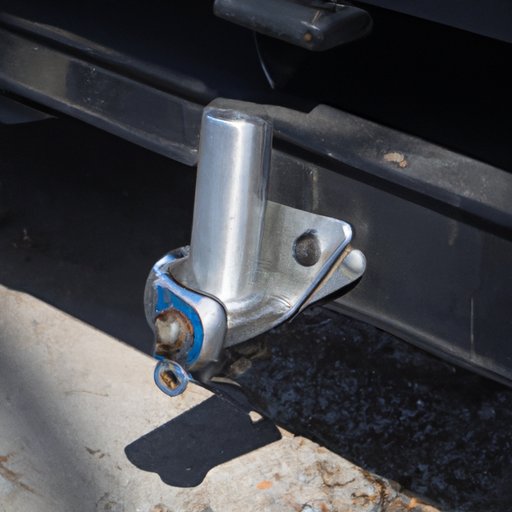
Introduction
When towing a trailer, it’s crucial to ensure that the weight is distributed evenly to prevent accidents or dangerous swaying. A weight distribution hitch is an essential piece of equipment that can help evenly distribute the weight and improve overall safety.
A Beginner’s Guide to Understanding Weight Distribution Hitches
A weight distribution hitch is a device that connects a tow vehicle to a trailer to distribute the weight and improve stability. It works by distributing the load evenly across the axles of both the tow vehicle and the trailer.
There are different components of a weight distribution hitch, including the ball mount, spring bars, and sway control devices. These work together to ensure that the weight is balanced and the trailer is stable while in motion. The system must be installed correctly to work properly.
Why Every Trailer Owner Should Invest in a Weight Distribution Hitch
Towing a trailer without a weight distribution hitch can be risky and even dangerous. Uneven weight distribution can cause the trailer to sway or fishtail, putting the driver and other vehicles on the road at risk. By investing in a weight distribution hitch, you can prevent these issues and improve safety while towing.
Using a weight distribution hitch also improves towing performance, as it helps keep the tow vehicle level and reduces wear and tear on tires and suspension systems.
The Importance of Proper Weight Distribution When Towing a Trailer
Weight distribution is crucial when towing a trailer, as uneven weight distribution can cause the trailer to be unstable and difficult to control. It’s essential to properly distribute weight in the trailer, keeping in mind the weight capacities and load limits of both the trailer and tow vehicle. Failure to do so can result in accidents, sway, or even jackknifing of the trailer.
A weight distribution hitch helps improve stability by redistributing the weight to both the tow vehicle and the trailer. This means that the weight is evenly distributed across all of the axles, providing a safer and more stable towing experience.
Comparing Different Types of Weight Distribution Hitches: Which is Best For You?
There are several types of weight distribution hitches to choose from, including round bar hitches, trunnion hitches, and weight distribution hitches with sway control. Each type has its pros and cons, depending on your towing needs.
Round bar hitches are the most popular type of weight distribution hitch and are easy to install and use. Trunnion hitches are also excellent, but they are usually more expensive and harder to install. Weight distribution hitches with sway control help prevent sway while towing, but they can be more complicated to adjust and use.
Choosing the right weight distribution hitch for your specific needs is crucial for optimal performance and safety while towing.
How to Install and Use a Weight Distribution Hitch for Safe Towing
Installing a weight distribution hitch can be a bit complicated, and it’s essential to follow the manufacturer’s instructions carefully. The first step is to choose the right hitch and make sure it’s properly sized for both your tow vehicle and trailer.
The installation process involves attaching the hitch to the tow vehicle and the trailer, using the spring bars to distribute the weight, and adjusting the hitch to ensure that the trailer is level and stable.
Once the hitch is installed, it’s crucial to know how to use it correctly. This includes properly adjusting the tension on the spring bars, always making sure the trailer is adequately loaded, and avoiding sudden stops or quick movements while towing.
The Science Behind Weight Distribution Hitches and How They Work
Weight distribution hitches work by redistributing the weight between the tow vehicle and trailer to improve stability and handling. The hitch uses spring bars to transfer the weight from the rear axle of the tow vehicle to the front axle and the axles of the trailer. This results in better traction on the road, improved braking, and a safer and more stable towing experience.
The physics behind weight distribution hitches is essential to understand when towing a trailer. The weight must be balanced and distributed evenly to prevent sway or loss of control. Weight distribution hitches are designed to mitigate the effects of uneven weight distribution and improve stability and safety while towing.
Conclusion
Investing in a weight distribution hitch is essential for safe and efficient towing of a trailer. Proper weight distribution is crucial to prevent accidents and ensure a stable and bump-free ride. By understanding how weight distribution hitches work and choosing the right type for your needs, you can significantly improve your towing performance and overall safety on the road.




